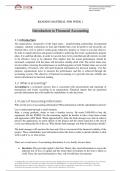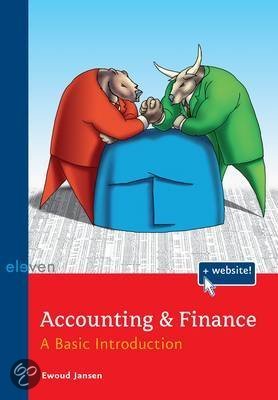Summary
Summary Introduction of Financial Accounting
- Course
- Institution
- Book
Financial accounting is a specialized branch of accounting that involves recording, summarizing, and reporting a company's financial transactions over a specific period. This process results in the preparation of financial statements, which provide a detailed view of the company's financial health ...
[Show more]




